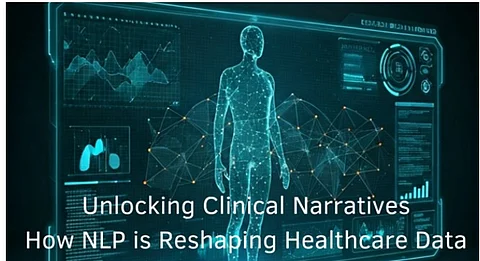

In today’s digital era, the healthcare sector produces vast amounts of data embedded in unstructured clinical notes. These narratives, though rich in insights, are difficult to analyze using traditional methods. Sarika Kondra, along with Wu Xu and Vijay V. Raghavan, presents a transformative view on leveraging Natural Language Processing (NLP) to unlock the hidden value in electronic health records (EHRs), enabling a deeper understanding and more effective use of clinical documentation.
Although EHRs have well-structured fields encompassing medication and lab results, approximately 80% of the content in EHRs resides in the form of free-text clinical notes written by health care providers. Clinical notes describe symptoms, assessments, and treatment plans in narrative form, making them important and informative but difficult for machines to understand. Their lack of format, use of jargon, and frequent abbreviations present a formidable obstacle—one that NLP is now beginning to conquer.
The approach to processing clinical notes through natural language processing requires an essential two-stage process, namely upstream and downstream tasks. Upstream tasks are the most fundamental, involving the preparation of text through common steps such as tokenization, lemmatization, and part-of-speech tagging, among others. These generic steps of analyzing text require a domain-adapted step in the presence of medical language to manage its quirks properly.
Downstream tasks are then formed to fulfill specific healthcare goals laid upon the upstream work: extraction of diseases, treatments, medications, and relationships that target them. Collaboratively, these tasks aid clinicians and researchers in shifting narrative-heavy notes toward structured and searchable data.
The preprocessing of clinical text requires more than the conventional preparation. Medical notes may contain sentence fragments, incorrect grammar, and various abbreviations. In the case of tokenization, it is important to identify both meaningful segments and segmenting sentences so that the meaning is preserved. Lexical normalization further reduces the complications by ensuring that elastic forms of words are normalized in common forms so that quality analysis can take place.
In addition, applying part-of-speech tagging to denote grammatical roles required medicinally-unique models trained on healthcare data.
How important is Named Entity Recognition (NER) in the downstream NLP task when it extracts important clinical concepts of diseases, symptoms, procedures, and drugs (from clinical text)? For example, if the text describes that, based on the physician’s assessment, the patient was experiencing "chronic headaches and increased blood pressure," NER can pinpoint those symptoms and the measurement quite nicely.
However, identifying terms and understanding the context in medicine is much more involved than just identifying individual terms. As example, Relation Extraction (RE) is an NLP task concerned with the relations between entities (e.g., testing linked to a diagnosis, and treatment informed by a condition). Comprehending these relationships is very useful to establish a more complete patient profile, and facilitate clinical research.
Healthcare data handling mandates strict adherence to privacy standards. NLP models are also being applied to automate the de-identification process, masking personally identifiable information like names, dates of birth, and addresses. This allows researchers to work with real clinical narratives while preserving patient confidentiality—a necessary balance between utility and ethics.
There is great potential for natural language processing (NLP) technology in healthcare, but there is still arguably one hurdle to overcome - the lack of labeled clinical data. Annotating clinical data is difficult and costly because it takes medical knowledge and time to appropriately label the data. To help mitigate these issues, a number of techniques have been developed.
Active learning emphasizes annotating data with the highest learning potential. Data augmentation increases the dataset by introducing syntactic noise, which is utilized mainly in natural language processing tasks. The technique while effective, should only be applied if appropriate. Transfer learning allows models that are trained on general language data to be adapted to run on a medical data. Lastly, weak supervision involves "noisy" labels (or labels that still provide value in the model training process), all of these strategies help reduce the problem of manual_annotate clinical data, and improve performance of the model.
The future of clinical NLP is one of continual refinement. As language models become more sophisticated and healthcare datasets more accessible, the capacity to derive actionable insights from clinical notes will only grow. The goal is not merely to process data faster, but to enrich patient care, streamline workflows, and fuel medical discoveries through intelligent automation.
In conclusion, Sarika Kondra and her co-author highlight that although Natural Language Processing (NLP) in healthcare has made notable progress, it remains at the early stages of its evolution. With continuous advancements in artificial intelligence and machine learning, there is immense potential to extract deeper insights from complex clinical narratives. As these technologies become more integrated into routine medical practice, they promise to enhance not only operational efficiency but also revolutionize the interpretation and application of healthcare data for improved outcomes.
